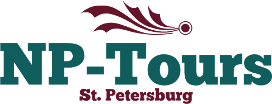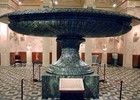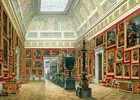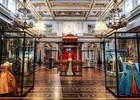DESCRIPTION
Explore the magnificent collection of the Hermitage museum with guided tour! This tour of the Hermitage will introduce you to the main rooms and expositions of the largest museum in Russia and one of the most famous museums in the world. The State Hermitage Museum is the calling card of St. Petersburg, as well as one of the largest and most significant art and historical museums in Russia and abroad.
Modern Hermitage is a complex museum complex. The main exposition of the museum occupies five buildings situated along the embankment of the Neva River, the main of which is considered to be the Winter Palace and the Eastern Wing of the General Staff on Palace Square. The museum’s collection consists of about three million works of art and monuments of world culture, from the Stone Age to the present century.
The Hermitage today. At present the collections of the Hermitage number 2,600,000 items. These include about 15,000 paintings, 12,000 sculptures, 600,000 prints and drawings, over 600,000 archaeological exhibits, 1,000,000 coins and medals, and 220,000 items of applied art. Four hundred rooms are open to the public.
Origins and History
The Hermitage began in 1764 as a private court museum for its founder, the reclusive Czarina Catherine the Great (1762-96, who dubbed it "my hermitage". She herself initiated the collection by purchasing more than 200 paintings from Johann Ernst Gotzkowsky in 1763. Further collections were acquired, including: The Brühl collection (Saxony), The Crozat collection (France) and the Horace Walpole art collection (England) [negotiated by Christie's], among others. Later Czars continued to add to the museums treasures, particularly works of Classical Antiquity and Renaissance art from collectors throughout Europe. In the late 1840s, Czar Nicholas I (ruled 1825-55) commissioned a building to house the burgeoning collection of Greek, Roman, and Egyptian antiquities. Called The New Hermitage, it was opened to the public in 1852. One might say, however, that the real spiritual father of the Hermitage is Tsar Peter the Great, who ordered the construction of the city of St Petersburg during the era of Petrine art (1686-1725), and thus opened a 'window onto the West.' Catherine the Great merely took advantage of the situation created by her illustrious predecessor.
20th Century Expansion
Following the 1917 Revolution, all artworks in the possession of the Imperial Royal Family, together with many privately-owned collections of fine art, were proclaimed property of the Soviet state and transferred to the Hermitage and other museums. These included numerous Old Master paintings from the palaces around Moscow and Saint Petersburg. The process continued with the forcible acquisition of the private collections of Sergei Shchukin (1854-1936) and Ivan Morozov (1871-1921). On the other hand, during the years 1928-38, Stalin carelessly disposed of over 2,000 works of art, including priceless items like The Annunciation by Jan Van Eyck, Adoration of the Magi by Botticelli, Alba Madonna by Raphael, Venus with a Mirror by Titian, and numerous other works by Rembrandt, and sold a further 22 paintings to America.
However, after World War II the collection was significantly augmented by the seizure of 74 canvases of Impressionist and Post-Impressionist painting from private collections in Germany. Originally considered to be 'lost', these works were finally unveiled to the public in 1995.
Additional treasures, especially gold artifacts excavated by German archeologists from the Middle East at the turn of the century, were seized by the Soviet Red Army from museums in Berlin during 1945-6. Lastly, several Western artists, notably Henri Matisse, donated works of art to the USSR in the aftermath of the war.
Opening Hours
Tuesday, Thursday, Saturday, Sunday:
10.30-18.00
Wednesday, Friday:
10.30-21.00
Closed: Mondays,
as well as January 1 and May 9




